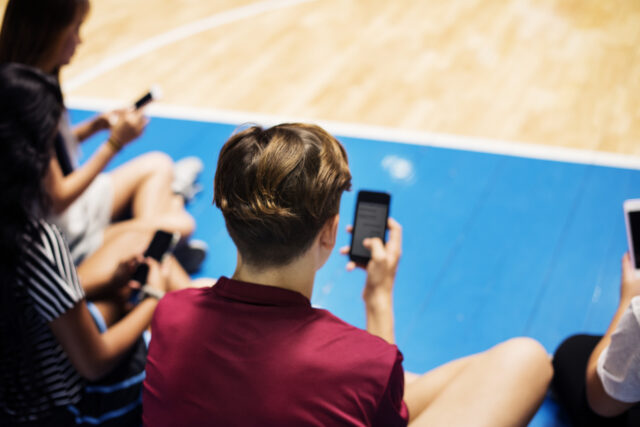Social media has transformed our lives. Whether it’s keeping up with friends, networking or even job searching, there’s no denying that social media has become an integral part of today’s society. This shift has been reflected in athletics programs as well—no longer a simple communication tool, social media has become a driving force for fan engagement, brand building and professional development. As athletic directors, it’s important to recognize social media’s power and embrace how it can significantly benefit the athletic program, the athletes, staff and even your own professional growth.
1. Social Media for Program Growth and Engagement
Social media is the central fan engagement tool in athletics today. With platforms like Instagram, Twitter and TikTok, fans expect instant updates, behind-the-scenes content and even live-streamed events. A robust social media presence not only keeps current fans engaged but also attracts new audiences who may not be physically present but want to follow games and events remotely.
If you have not already, it may be time to hire a social media manager or assign someone on your staff to monitor and post on your athletic department’s social media.
Key Actions:
- Consistent Updates: Consistently post updates about games, athlete achievements and program milestones to keep fans in the loop. Consistency builds anticipation and keeps your community connected to your program.
- Live-Streaming: Platforms such as Facebook, Instagram and TikTok live offer a cost-effective way to broadcast games and events, reaching fans beyond local communities.
- Fan Interaction: Use polls, Q&A sessions, and live videos to interact with fans and gather feedback. These methods create a two-way dialogue that strengthens the bond between your program and its supporters.
A solid social media presence makes the program more visible and more accessible, creating a ripple effect that can lead to increased ticket sales, sponsorships and community support.
2. Building and Protecting the Athlete Brand
Today’s student-athletes are not only competitors but also personal brands. Social media is crucial for athletes looking to showcase their skills, connect with fans and attract potential endorsements. For high school athletes specifically, social media is a powerful tool to aid in college recruitment. Athletic directors can play a significant role in guiding athletes on the effective and responsible use of social media to maximize these benefits.
Key Actions:
- Education on Digital Footprint: Host social media workshops for athletes that cover best practices, privacy settings and strategies for building a positive online presence. Help them understand that every post contributes to their personal brand.
- Highlighting Achievements: Use social media to spotlight athlete achievements, whether academic, athletic or community-related. This recognition can serve as a digital resume that athletes can share with scouts, colleges or potential sponsors.
- Mental Health Support: Acknowledge the potential downsides of social media, such as negative comments or unrealistic comparisons, and provide resources to help athletes manage these challenges effectively.
When athletes understand how to present themselves positively online, they can use their visibility to open doors for opportunities like college recruitment and Name, Image and Likeness (NIL) deals, boosting their careers and benefiting your program’s reputation.
3. Amplifying the Role of Staff and Coaches
Coaches and staff members are integral to the program’s success, and social media offers a way to highlight their dedication and expertise. Highlighting the human side of your staff can deepen community connections and attract aspiring athletes who want to be part of a supportive environment.
Key Actions:
- Coach Profiles: Create social media content that profiles coaches’ backgrounds, values and goals. This adds a personal dimension to the program and shows appreciation for their hard work.
- Professional Development Content: Encourage staff to share their expertise through videos, articles, or social media posts. When using social media for professional development, recommended platforms include LinkedIn, X and Facebook.
- Promote Healthy Boundaries with Athletes: It is a personal choice on whether or not to interact with athletes on social media but keeping a degree of separation on social platforms is recommended. As a rule of thumb, most risk management experts suggest that coaches do not engage with minor athletes on social media.
By shining a light on coaches and staff, you foster a culture of appreciation and recognition that positively reflects on the entire program.
4. Athletic Directors: Building Your Professional Brand
For athletic directors, social media can be a powerful tool for career growth and professional visibility. Social platforms such as LinkedIn, Twitter and even Instagram provide athletic directors with the opportunity to share accomplishments, engage in industry conversations and showcase leadership within the sports community.
Key Actions:
- Showcasing Leadership: Use your socials to share achievements and program updates. Highlighting successes—like a championship win or a new facility opening—reinforces your role as a leader in the field.
- Networking: Social media provides direct access to a network of professionals across the sports management industry. Engage in industry discussions, connect with fellow athletic directors and stay updated on the latest trends. Connecting with other sports professionals can also be beneficial in staff recruitment.
- Sharing Knowledge: Share insights from your experience, such as strategies for managing teams, fostering inclusivity or overcoming common challenges in athletic programs. This helps to establish your credibility as an expert and opens doors to speaking engagements, interviews or mentorship opportunities.
A strategic approach to social media can amplify your reputation and influence in the athletic world, leading to greater visibility for you and your program.
Embracing Social Media as a Core Strategy
Living in the digital age, social media is a valuable instrument for athletic directors who aim to elevate their programs, support athletes, build up their staff and better their own professional presence. By using social media safely and strategically, you can share your program’s story in a compelling way, connect with fans, attract talent and create an engaged community. It is an investment that will yield long-lasting results across every aspect of your athletics department.




